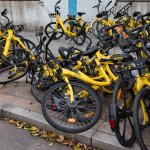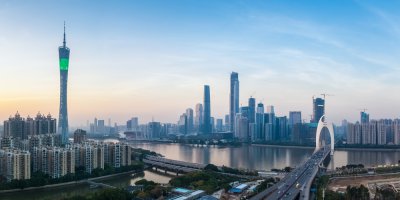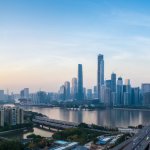
The Singaporean government is working on five key projects that will propel the country towards becoming a smart nation. Source: Shutterstock
How Singapore plans on becoming a smart nation
SINGAPORE has been leveraging technology in an effort to transform the country into a digitally driven economy.
The Smart Nation initiative brings together a tech literate population, businesses, and government agencies, to encourage and develop solutions for addressing urban challenges.
To that end, the Singaporean government is running five core projects aimed at facilitating a quicker adoption of digital innovations.
- National Digital Identity (NDI)
NDI is a unified database holding citizen information, which is integrated with government systems to enable easy access and interaction between agencies, businesses, and citizens.
It’s powered by SingPass and MyInfo – SingPass is a secure online portal (with a mobile version set to launch soon) for accessing government e-services; MyInfo is a consent-based citizen data management platform.
Users will only have to provide personal information to the government once. They can then use the same information on other approved public and private sector agencies.
- E-payments
PayNow is the country’s unified platform for mobile payments. The platform allows for peer-to-peer transfer using just a mobile number or National Registration Identity Card (NRIC) number. A corporate version has also recently been launched for business to business or consumer to business payments.
A unified QR-code, known as the Singapore Quick Response (SGQR) is also being implemented across the country this year, for allowing merchants to accept both domestic and foreign payments made on various e-wallets.
- Smart Nation Sensor platform (SNSP)
SNSP is the infrastructure layer used to collect data for monitoring everything from traffic to water quality. Using an array of sensors and internet of things (IoT)-enabled devices, government agencies can collect data to perform in-depth and cross-domain analysis. This means they can make decisions on planning public amenities and services for citizens based on real-time insights.
The project has started in Yuhua, the Civic District, and Orchard Road, supporting CCTVs and environmental sensors. The government is planning on leveraging lampposts for the next phase of implementation.
- Smart Urban Mobility
Public transport providers SBS Transit and SMRT are equipped with an intelligent fleet management system, relaying real-time information to provide a more accurate estimation of bus times. This allows the operators to optimize bus routes and schedules according to commuter volume.
On-demand bus services are also being trialed in attempts to make public transport systems more dynamic and responsive to commuter needs. One example is crowdsourcing mobile app Beeline, which allows operators to open new routes according to passenger demand.
Autonomous cars are also being trialed as an option for future transport.
- Moments of Life
Moments of Life is a mobile app, which allows the government to push relevant services and resources to the citizens in a timely manner. Using the app, parents can register the birth of their child, apply for Baby Bonus, note their interest in preschool facilities, access a child’s medical records, and receive parenting information customized to the local context.
Additional functionalities will be added to cater for more moments in life, including processes related to home purchases. This will encourage better inter-operability between organizations, as well as ensure government agencies are proactive in providing services.
As Singapore moves forward in taking a digital-first approach, the five strategic projects allow citizens and businesses better access to the government, cutting the unnecessary red tapes that cause delays. The projects also allow individual agencies to take a more proactive approach engaging with its citizens, enabling a collaborative effort for driving the country towards a digital-driven future.
READ MORE
- Ethical AI: The renewed importance of safeguarding data and customer privacy in Generative AI applications
- How Japan balances AI-driven opportunities with cybersecurity needs
- Deploying SASE: Benchmarking your approach
- Insurance everywhere all at once: the digital transformation of the APAC insurance industry
- Google parent Alphabet eyes HubSpot: A potential acquisition shaping the future of CRM




